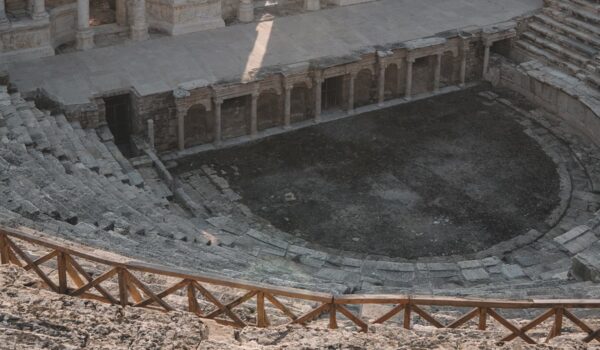The origins of theater can be traced back to ancient Greece more than two thousand years ago. The ancient art originated as a spectacular entertainment of the public, a festive skit by masquerading actors. The performances were originally timed to coincide with the Great Dionysia, a great religious festival.
Now theater is undoubtedly more than a procession of singing men in goat skins through the city. It has become high art, a mode of recreation for high society, a place of cultural enlightenment. The history of the theater – a fascinating process of development, which does not cease to this day.
The Beginning
In Athens, in the 5th century BC, theatrical performances were an integral part of religious festivals. Processions with the statue of Dionysus were accompanied by merry chants and dramatic games. It could be said that the history of Athenian theater began as an amateur art performance for a small number of onlookers. Initially only tragedies were staged, comedies began to be shown later. It is noteworthy that plays were usually shown only once. This stimulated authors to create relevant, interesting works. The playwright not only wrote the play, he was a full participant in the performance, performing the roles: director, composer, choreographer and even actor. Naturally, these were exceptionally talented people.
But to become a choreographer (choir leader), great talent was not required. All that was needed was money and connections with civil servants. The chorégue’s main duty was to pay the bills, to provide full material support and to support the theater. It was a competition, with the choregian, the poet and the protagonist winning. The winners were crowned with ivy and given prizes. The victory was given to them by the decision of the jury.
An interesting fact is that the ancient Romans were real fans of realism. The ideal production was considered one in which the actor would get into his role by 100% – if necessary, he had to be ready even to die.
The Greek theater had no roof; the audience and actors were, in fact, outside. The size of ancient theaters was enormous, holding anywhere from 17,000 to 44,000 people. In the beginning wooden stages were used for seating, then natural stone slopes were adapted for theaters. And only then, in the IV century BC, was a stone theater built.
You might be interested to know that the government, starting with Pericles, gave the opportunity to visit the theater and join the beautiful even to the financially unsecured citizens. For this purpose, everyone was given a subsidy for one visit to the theater, and later for three visits.
The history of ancient theater has one characteristic feature: actors played their roles without the help of their own mimicry. It was replaced by all kinds of masks, often quite grotesque. Much attention the actor paid to body movements, clothing. Actors were men, even for female roles. They had a privileged position in society and were exempt from taxes.
An interesting fact is that Livius Andronicus, the ancient Roman playwright, was the father of the world’s first “phonogram.” He was left without a voice, but he got out of the situation by finding a boy who spoke for him.
